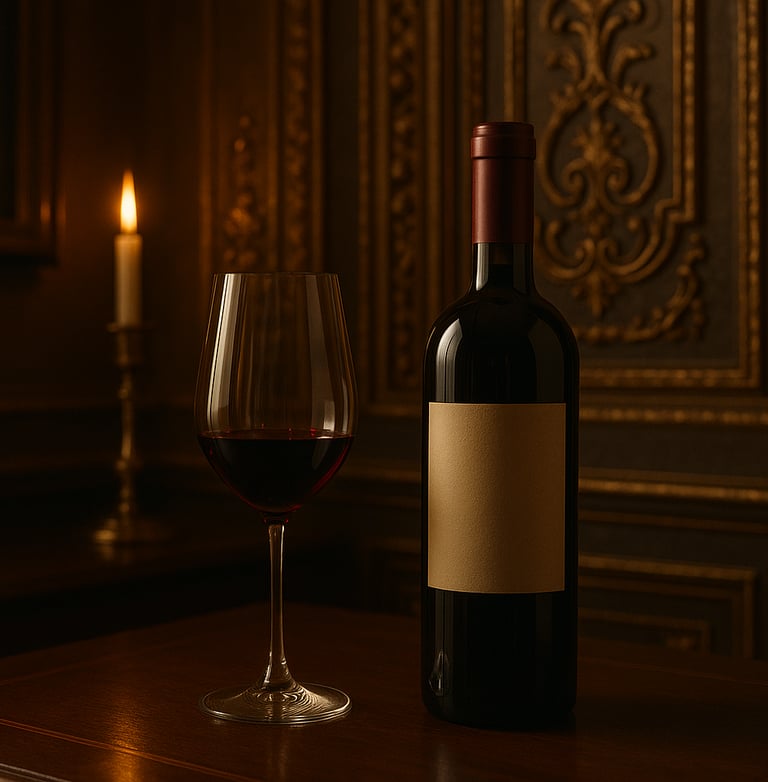
From Cellar to Story
How to Transform History into Emotion
10/16/2025


Introduction: Having History Is Not the Same as Having Narrative
Every winery has a history. But not all have an emotional, coherent and projectable narrative that connects with the fine wine client.
In the world of luxury, chronological facts or family lineages are not enough. The sophisticated consumer does not buy history: they buy the emotion contained in that history, a vision, a symbolic reflection of their own imagination.
And transforming a technical trajectory into a narrative of high emotional impact requires precision, sensitivity, and editorial decision.
History and Narrative: They Are Not the Same
History is what happened. Narrative is what we decide to tell, how we tell it, and why. Well-crafted storytelling:
Eliminates the redundant.
Selects with aesthetic criteria.
Knows what to omit to generate mystery.
Knows what to highlight to create identification.
In luxury, telling everything is a mistake. Telling it well, with elegance and narrative rhythm, is a sign of maturity and symbolic mastery.
How to Turn Data into Emotion
For a technical history to become exciting, it must be worked on three levels:
Structure: What is the conflict, the tension, the transformation?
Language: What tone, what images, what cadence do we use?
Projected emotion: What does the receiver want to feel? Identity, admiration, desire, pride?
Instead of saying: "We are a family winery founded in 1974 with 30 hectares at altitude..." A luxury brand could convey: "For three generations, we have made wines that are never in a hurry, like us. At 1,200 metres, the cold teaches you to listen, and our vines learned it before anyone else."
Brands That Master the Art of Emotional Storytelling
✦ Masseto (Italy)
It does not explain its value. It builds a narrative of silence, rarity, raw material and time. Every editorial piece suggests that the important thing is not the wine, but the intimate relationship someone is about to begin with it.
✦ Viña Vik (Chile)
It integrates art, science, landscape and philosophy in a narrative that elevates perception from the very first visual contact. Its storytelling is architectural: every element speaks the same language, even the air one breathes in its hotel.
✦ Domaine Huet (France)
Biodynamic poetry, serene language, respect for the land. The narrative has no urgency, but it has weight. The client feels part of an aesthetic and ethical continuity.
What Prevents a Story from Moving People
Common mistakes in wineries with great history but scarce narrative:
Using technical language where emotion is needed.
Resorting to clichés like “passion”, “tradition” or “know-how” without turning them into vivid scenes.
Believing that “the more data, the more value.”
Not adapting the narrative to the channel: what works in a tasting does not work in a newsletter.
Luxury requires a narrative that breathes. That suggests without exhausting. That summons without invading.
How to Start Building an Emotional Narrative
Identify the moment of transformation. Not everything begins with the founding. It begins with a gesture, a decision, a conviction.
Choose a language that represents you. Formal, poetic, sober, visual. It must be true to the brand’s aesthetic identity.
Connect your story with what the client wants to project. The client is not looking for your story: they are looking for a story in which they can recognise themselves.
Work on the staging. The narrative does not live only in texts: it is expressed in the space, in the rhythm, in the team’s gaze.
Conclusion: Narrative Is the Wine Before the Wine
A brand that manages to move before the client tastes a single drop has already won half the ground. And when that emotion is aligned with the real experience, aesthetic and emotional loyalty is generated.
🍷 Because a great story told with precision is never forgotten. It becomes part of the consumer’s memory.

